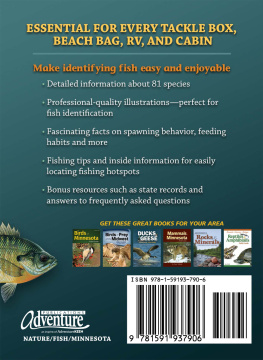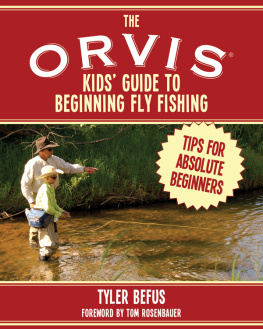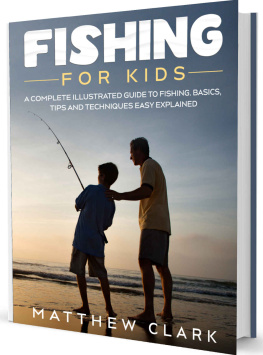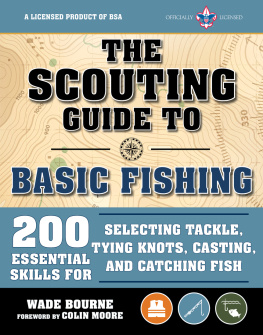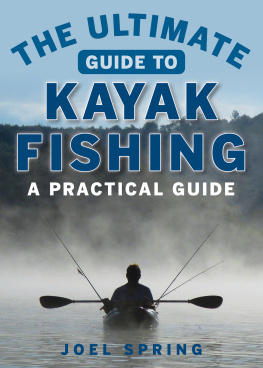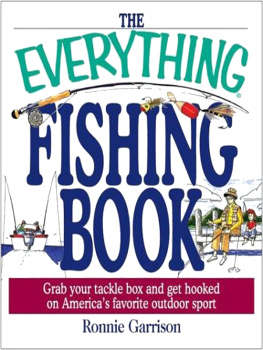GLOSSARY
ActionA word that expresses the flexibility and power of a fly rod.
AFTMAAmerican Fishing Tackle Manufacturers Association. American fishingtackle manufacturers organized to maintain standards of fishing tackle, public information, product quality, marketing, and conservation of the resource.
ArborThe spindle of a fly-reel spool that the backing line is attached to and wound on.
Aquatic insectsThose insects that live some part of their normal life cycle beneath the water.
Attractor (color)Unnaturally bright color in a fly pattern.
Backing (braided)A line most commonly composed of several filaments of either nylon or Dacron braided into a single component. Used to extend fly lines length.
BankThe higher and steeper sides above a lake or stream, usually created by water cutting or eroding the shoreline.
BarA mounded structure in streams and some lakes caused by accumulation of rock, sand, sediment, and dead vegetation, usually protruding out of the water or very near the surface.
Barb (hook)The raised cut section of a hook immediately behind the point. It is designed to prevent the hook from coming out of the fishs mouth.
Barbless hookA fly hook without a barb.
BassA general descriptive term for a group of larger freshwater sunfish, particularly largemouth bass, smallmouth bass, and Kentucky or spotted bass.
Bass bugA floating fly used for bass fly fishing.
BeachingA method of landing a fish by coaxing or forcing it to swim or drift itself aground in the shallow water of a lake or stream shoreline.
Beaver pondA small lake, usually less than two acres, that has been formed by the damming of a small brook or stream by beavers.
BellyThe larger midsection of a fly line. Also may refer to the curve of a fly-line midsection when wind or current pushes it into a C shape.
BiteA term often used by fly fishers to describe the strike of a fish. Bite also may refer to the distance from the hook point and the extent of the bend.
Bite tippetA short tippet of heavy monofilament or wire that prevents a sharp-toothed fish from biting the fly off the leader. Also called a shock tippet.
Brackish waterWater that has less salt content than true ocean salt water. Occurs most commonly where freshwater streams meet or mix with saltwater bays and estuaries.
Braided loopA loop connector that slides over either end of the fly line and is fixed there with glue or a heat-shrink sleeve. Used for loop-toloop connections of the leader or shooting line to the fly line.
BreakoffThe accidental or purposeful breaking of the leader tippet from a hooked fish, freeing it.
BucktailA streamer fly constructed from the hair of a deers tail.
BugUsually refers to a floating bass fly that might imitate various large insects, frogs, mice, and so on.
Butt capThe end of a fly-rod handle used for resting and protecting the fly rod and fly reel when stored upright. At times it is rested against the fly fishers stomach when fighting a large fish.
CanalA man-made, water-filled ditch used to join lakes or swamps to rivers, or to straighten and quicken the flow of a streams runoff.
CastThe act of delivering the fly to the fishing area with fly rod, line, and leader. Cast is also used as a descriptive term by English fly fishers to denote the fly leader.
Catch and releaseAn expression for catching fish, with immediate release alive and unharmed.
Catch-and-release netA shallow, soft, finemesh, knotless dip net that enhances the ability to capture, unhook, and release a fish without harming it.
ChannelThe main depression caused by flowing water (current).
CharA group of popular freshwater fish that includes brook trout, lake trout, arctic char, and Dolly Varden.
ChenilleA popular fly-tying material consisting of fine fibers of rayon, wool, nylon, and so on that are bound together in a uniform cord with two or more twisted threads. Especially popular on underwater flies such as the Woolly Worm.
Chum lineA series of fish food pieces put into the water to attract and congregate hungry fish in a specific area near the angler.
Class tippetA tippet that is accurately calibrated in pound test for world-record fly-fishing catches.
ClippersA small tool used to cut and trim the fly line, leader, or tippet material.
CoasterA local term, especially along the northeastern Atlantic coast, for a brown or brook trout that goes into brackish or salt water for a period of its life and then returns to freshwater streams to spawn.
Cold-water fishFish that thrive best in water temperatures ranging from 40 to 60 degrees F. For example: trout, char, grayling, and salmon.
Cool-water fishFish that thrive best in water temperatures ranging from 50 to 75 degrees F. For example: smallmouth bass, shad, walleye, northern pike, whitefish, striped bass.
CorkersRubber sandals with sharp, hard-metal cleats in their soles that are worn over waders, boots, or shoes to increase grip or traction on very slippery rock stream bottoms.
Cork ringsRings of cork that are glued together and shaped to form the fly-rod handle.
CoveA small water indentation in the shoreline of a lake or ocean.
CrayfishA freshwater, lobsterlike, small crustacean very popular as fish food.
CreelA container cooled by water evaporation, used to keep and carry dead fish.
Crossbar (fly reel)A part of a fly-reel frame that is chiefly for structural support between the two sides. Sometimes referred to as a post.
Cruising (fish)An expression describing a fish that is moving about in a lake or stream in order to find food.
CrustaceansAn important group of fresh- and saltwater aquatic invertebrates that are fed upon by many fish. Shrimp, scud, sow bugs, crabs, and crayfish are examples.
CurrentThe flowing or gravitational pull of water in rivers, streams, lakes, and oceans.
Dead driftThe drift of a fly downstream without action other than what is given it by the natural current flow. It means no drag.
Deer hairBody hair, usually coarse and semihollow, from various deer. Used for tying many fly designs.
DensityRefers to the weight of fly line, leader, or fly compared to the weight of the water. High density means much heavier than water and fast sinking. Low density means slow sinking or even floating.
Dip netThe device used to scoop up and hold a hooked fish. Also called a landing net.
Double hookA fly-hook design that has two points, barbs, and bends, and one common shank. Most commonly used for making Atlantic salmon flies.
Drag (guides)The rods guides and fly line create points of friction that are often referred to as drag.
Drag (line)An expressive term used to describe a current or wind pull on the fly line that results in pulling the fly unnaturally over or through the water.
Drag (reel)A part of the fly reel that adjusts the spools tension when line is pulled off the reel by the fly fisher or a fish.
DressThe application of waterproofing or flotant material to the fly line, leader, or fly.
DriftDescribes the path a fly travels while it is fished down the streams current.
Dry flyA basic fly design that floats on the waters surface. It is usually made of low-density, water-resistant materials to hold it in the waters surface film.
Dry-fly pasteA paste compound used to waterproof materials to hold them in the waters surface film.


